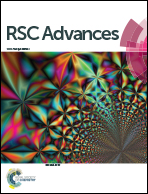Degradation of recalcitrant organics in landfill concentrated leachate by a microwave-activated peroxydisulfate process
Abstract
A microwave (MW)-activated peroxydisulfate (PDS) process was applied to remove recalcitrant organics in concentrated leachate. In this study, the optimum activation conditions were studied using the absorbance at 254 nm (UV254) and color number removal efficiencies and by comparison of the different processes. The inner oxidation mechanism was investigated by ultraviolet-visible (UV-vis) spectrophotometry and three-dimensional (3D) excitation–emission matrix (EEM) tests. The results show that oxidation effects followed the order MW/PDS > MW/H2O2 > heat/PDS. The efficiencies of chemical oxygen demand (COD) removal, UV254, and color number were 45.50%, 48.95%, and 88.35%, respectively. The biodegradability was enhanced to 0.23 under optimum conditions (initial pH of 3, MW irradiation power of 450 W, PDS dosage of 3.5 g L−1, and reaction time of 10 min). The UV-vis spectra suggest that the humification degree and aromaticity of organics in the concentrated leachate greatly declined in the MW/PDS process. 3D EEM spectra indicate that the molecular weight of organic substances in the concentrated leachate decreased markedly and that the constitution of the organics became simpler after the MW/PDS process. In a word, the MW/PDS process is a promising method for concentrated leachate treatment.



 Please wait while we load your content...
Please wait while we load your content...